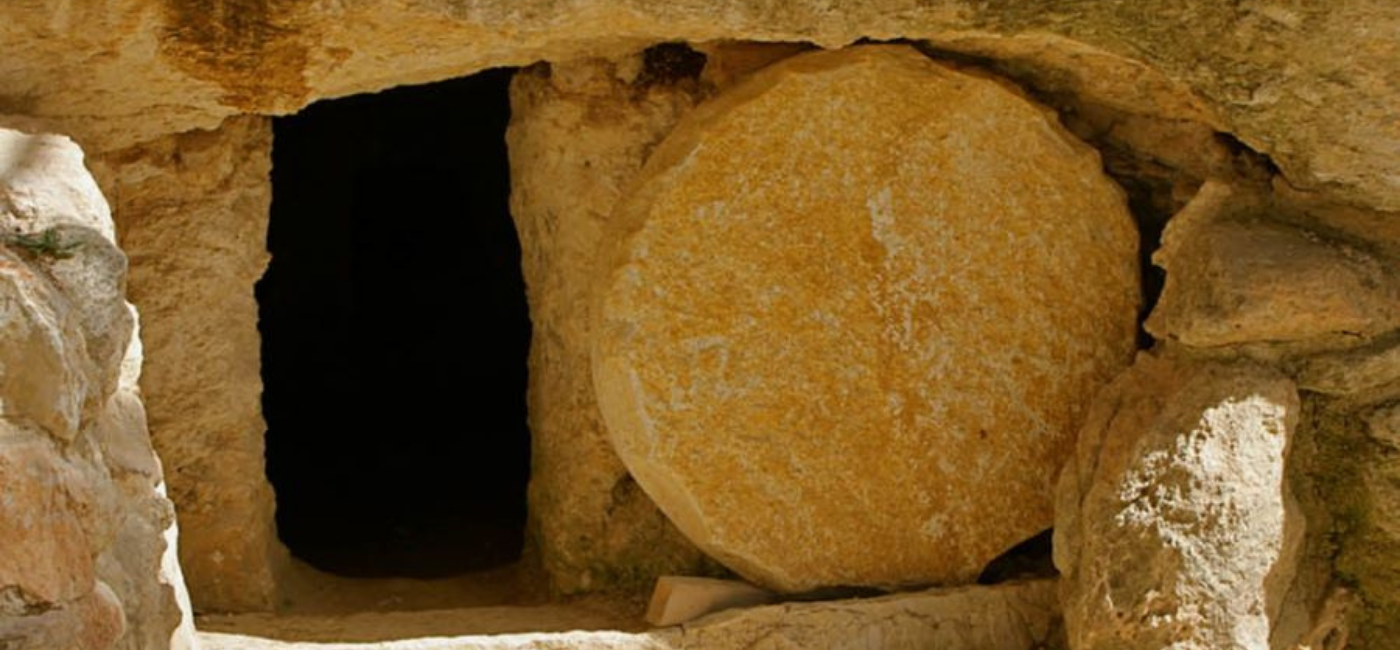
The Resurrection of Jesus: Fact or Fiction?
April 2, 2020
The temple authorities tried to cover it up (Matthew 28:11-15). Early heretics like the Gnostics denied it (they thought that since Jesus was divine, He could not also be human; therefore, He could not die, and thus there was no real resurrection). Detractors since the Enlightenment have rejected it as “unscientific” because it requires the acceptance of the possibility of miracles. Today, secularists and most liberal and moderate New Testament scholars insist that this event is neither real nor important, suggesting instead that the importance of Jesus is to be sought in His teachings of wisdom, morals, and love of fellow man, not in His defeat of death.
Nevertheless, all four of our biblical Gospels insist that Jesus was not only crucified and buried: He also came back to life on the third day (Matthew 28:1-6; Mark 16:2-6; Luke 24:1-6; John 20:1-20). Similarly, the sermons and speeches in the book of Acts are evidence that in the earliest presentations of the good news, His representatives constantly proclaimed that He was raised from the dead (Acts 2:23-37; 3:13-15; 4:10; 5:30-31; 7:52; 8:5, 32,25; 10:39-40; 13:26-31; 17:2-3, 18, 30-32; 25:19; 26:22-23; 28:20, 23) and there is no indication that there was ever push-back from the opposition except for what was rooted in presupposition (Acts 17:18; 25:19). Despite the fact that they had ample resources in money and manpower, they were never able to produce a corpse.
The earliest evangelists made this the focal point of their preaching in spite of the fact that they knew this would clash with the beliefs of the very cultures they were trying to reach (1 Corinthians 1:18, 21, 23; Galatians 5:11)! In fact, the New Testament declares that the resurrection of Jesus was God the Father’s declaration of His approval of Jesus’ life, death, and message (Romans 1:4). Like the Gospels (almost half of Mark’s gospel is dominated by the “passion narrative”—the last week of Jesus’ earthly ministry whose apex was His death, burial, and resurrection!), the letters insist that the resurrection of Jesus is at the heart of the Christian faith (Romans 10:9; 1 Corinthians 15:3-4, 17; 2 Timothy 2:8; 1 Peter 1:3) and that if it is not true, we are of all people most to be pitied, still in our sins, and misrepresenting God (1 Corinthians 15:14-15, 17, 19)! Jesus’ resurrection continues to be emphasized throughout the rest of the NT on through the book of Revelation (Revelation 1:4, 8, 18; 2:8, etc.).
There are many pieces of evidence that support the claim of orthodox Christians that the resurrection of Jesus is historical reality and not legend, myth, or fiction. Richard Bauckham recently reminded us that the testimony of the Gospels must be taken seriously because their narratives rest upon eyewitness testimony (Jesus and the Eyewitnesses, 2006). The tomb of Jesus is indeed empty, regardless which location you prefer (while many Evangelicals prefer the Garden Tomb over the traditional Church of the Holy Sepulchre [the Roman Catholic name]/Church of the Resurrection [Greek Orthodox name], the reality is that BOTH of these ancient burial grounds, one part of an Iron Age cemetery and the other a first-century cemetery, respectively, are vacant).
Ancient literature outside the Bible also underscores the insistence of the earliest followers of Jesus that He actually rose from the dead. The first-century Jewish historian Josephus Flavius described their message this way,
Pilate condemned him to be crucified and to die. And those who had become his disciples did not abandon his discipleship. They reported that he appeared to them three days after his crucifixion and that he was alive. Accordingly, he was perhaps the Messiah concerning whom the prophets have recounted wonders”
Similarly, the early rabbis, while not denying that the resurrection actually happened, asserted that Jesus accomplished this by His inappropriate use of the divine name YHVH as part of a magical formula:
“Woe to him who makes himself alive by means of the name of God!”
In addition to other pieces of evidence, Paul (martyred in AD 64) provides for us an ancient list of people he knew personally who were eyewitnesses of post-resurrection appearances. In a letter he wrote in AD 53 or 54, he tells us:
...He was raised on the third day according to the Scriptures, and…He appeared to Cephas, then to the twelve. After that He appeared to more than five hundred brethren at one time, most of whom remain until now, but some have fallen asleep [i.e., died]; then He appeared to James, then to all the apostles; and last of all, as it were to one untimely born, He appeared to me also.
While in this list, Paul provides some 525 instances of eyewitness encounters with the resurrected Jesus, the remainder of this article will focus only on one. This appearance may be the most overlooked and yet most powerful proof of Jesus resurrection from the dead.
This passage says Jesus appeared to “James”. This does not refer to James, one of Jesus’ 12 disciples, because in each of the 21 times this “James” is referred to in Scripture, he is always described as the brother of John and/or the son of Zebedee (examples: Matthew 4:21; 10:2, etc.). Instead, this James is to be identified as James, the half-brother of Jesus (Matthew 13:56; Galatians 1:19)! Typically when this James is mentioned in Scripture, no familial “identifiers” are used (Acts 12:17; 15:13; 21:18; 1 Corinthians 15:7; Galatians 2:9, 12).
Why is this identification important? During the ministry of Jesus, this James believed that Jesus was mentally ill and a blight on the family’s reputation (Mark 3:21). The Scriptures make it clear that he was absent at the crucifixion, despite the fact that their mother was there and that at the death of her first-born son (Jesus, Luke 2:7), as the next oldest, James would become responsible for her care in old age. In his absence, Jesus has to assign the care of their aged mother to his disciple John (John 19:26-27).
The next time we hear about Jesus’ brother James is in AD 49, when Paul refers to him as one of the “pillars” (leaders) of the Church (Galatians 2:1-12). About the same time, Luke describes him as the leader of the Jerusalem church (Acts 15:13-19). According to early church tradition and most conservative New Testament scholars, somewhere in this period, this half-brother of Jesus wrote the letter that bears his name that was soon accepted by the early church as an authoritative book in the New Testament canon. Next, Josephus Flavius (a non-Christian) tells us that in AD 62,
...Ananus [the high priest]…convened the judges of the Sanhedrin and brought before them a man named James, the brother of Jesus who was called the Christ, and certain others. He accused them of having transgressed the law and delivered them up to be stoned.
In the earliest history of the early church after the book of Acts, Hegesippus (born c. AD 90) adds this note to the report of Josephus:
[The religious leaders said,] “Take your stand on the Temple parapet, so that from that height you may be easily seen and your words audible to the whole people.” Then they said, “O Righteous one, whose word we are all obliged to accept, the people are going astray after Jesus who was crucified; so tell us what is meant by ‘the door of Jesus’?” He replied as loudly as he could: “Why do you question me about the Son of Man? I tell you, He is sitting in heaven at the right hand of the Great Power, and He will come on the clouds of heaven.” …..So they went up and threw down the Righteous one. Then they said to each other, “Let us stone James the Righteous,” and they began to stone him…..Then one of them, a fuller, took the club which he used to beat out the clothes, and brought it down on the head of the Righetous one. Such was his martyrdom.
(Cited from Book 5 of his Memoirs, which did not survive antiquity, but was preserved by Eusebius in his Ecclesiastical History 2.23)
The question now becomes obvious: How does a close family member of Jesus go from believing He is insane and a blight on the family’s honor to becoming a martyr of the faith, refusing to renounce his faith in Jesus even in the face of execution? This is where the text in 1 Corinthians comes into play yet again: only a post-resurrection appearance of Jesus to His younger brother could bring about such a radical change of mind. And in this complete reversal of opinion of a close relative, an eyewitness who became willing to be martyred for his faith, we find one of the most compelling pieces of ancient evidence for the resurrection of Jesus.
In this wonderful season of the year, be reminded that our faith is not based on subjective experience, speculation, or myth. The foundation of our faith is the resurrection of Jesus, and that foundation is grounded in the testimony of eyewitnesses, including martyrs who had originally written Jesus off as a madman!
Posted In Devotional Israel Easter
